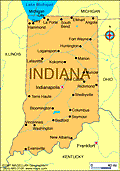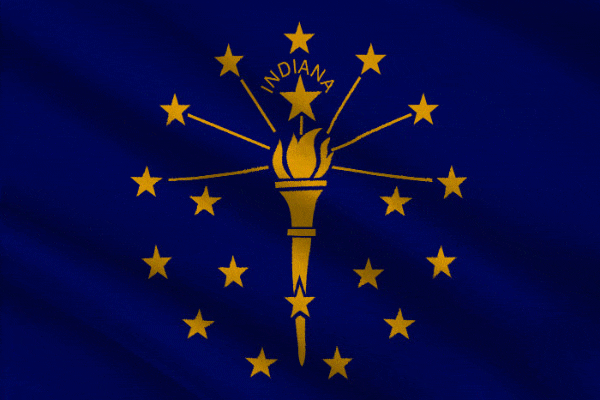 History First explored for France by Robert Cavelier, Sieur de la Salle, in 1679-1680, the region figured importantly in the Franco-British struggle for North America that culminated with British victory in 1763. George Rogers Clark led American forces against the British in the area during the Revolutionary War and, prior to becoming a state, Indiana was the scene of frequent Indian uprisings until the victories of Gen. Anthony Wayne at Fallen Timbers in 1794 and Gen. William Henry Harrison at Tippecanoe in 1811. During the 19th century, Indiana was the site of several experimental communities, including those established by George Rapp and Robert Owen at New Harmony. Indiana's 41-mile Lake Michigan waterfront—one of the world's great industrial centers—turns out iron, steel, and oil products. Products include automobile parts and accessories, mobile homes and recreational vehicles, truck and bus bodies, aircraft engines, farm machinery, and fabricated structural steel. Wood office furniture and pharmaceuticals are also manufactured. The state is a leader in agriculture with corn the principal crop. Hogs, soybeans, wheat, oats, rye, tomatoes, onions, and poultry also contribute heavily to Indiana's agricultural output. Much of the building limestone used in the U.S. is quarried in Indiana, which is also a large producer of coal. Other mineral commodities include crushed stone, cement, and sand and gravel. Wyandotte Cave, one of the largest in the U.S., is located in Crawford County in southern Indiana, and West Baden and French Lick are well known for their mineral springs. Other attractions include Indiana Dunes National Lakeshore, Indianapolis Motor Speedway, Lincoln Boyhood National Memorial, and the George Rogers Clark National Historical Park. |
Indiana
Read this profile of Indiana to learn about the state's history, points of interest, and government. Also find interesting facts about each state, including the state's motto, symbols, and when it entered the union.





